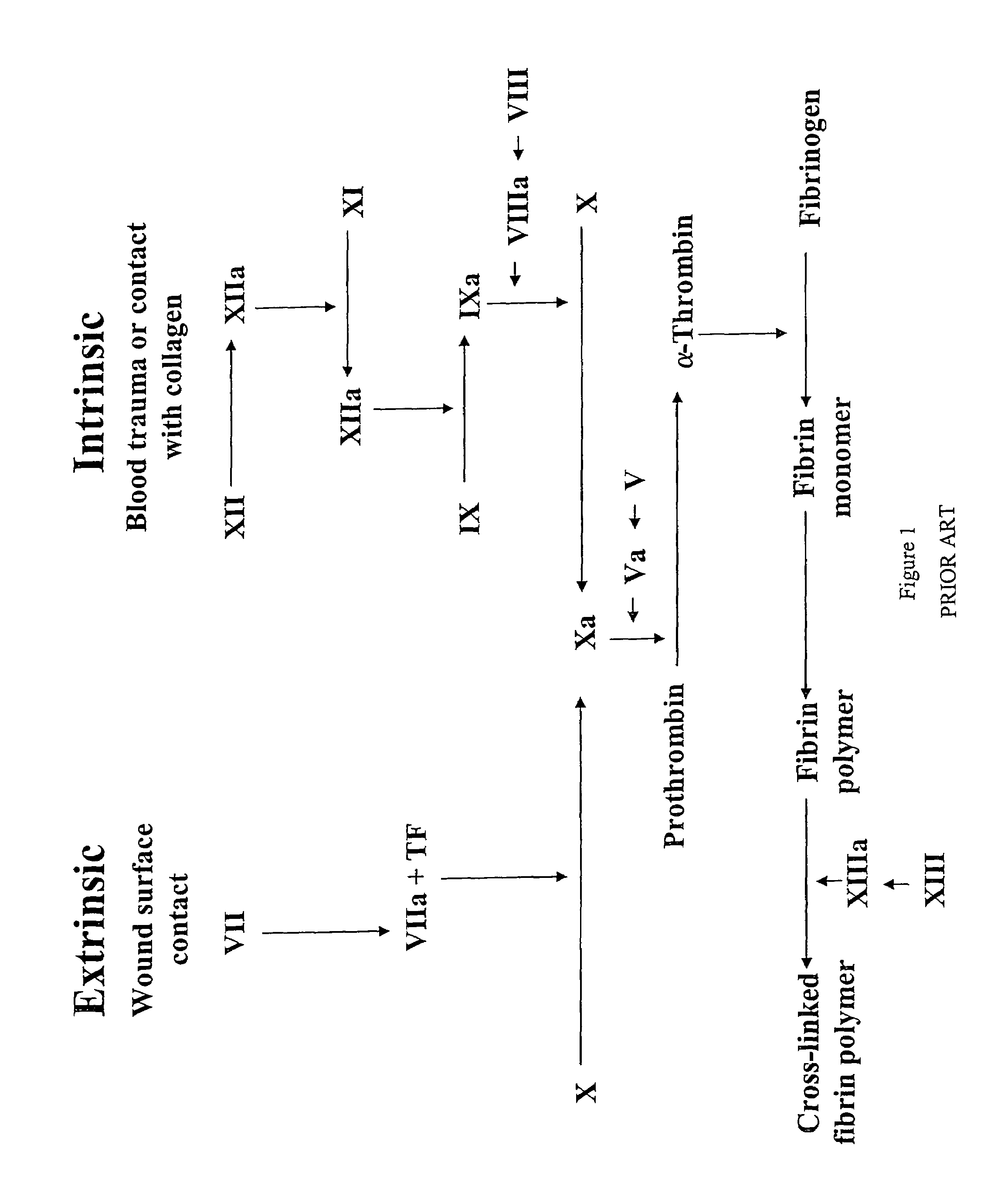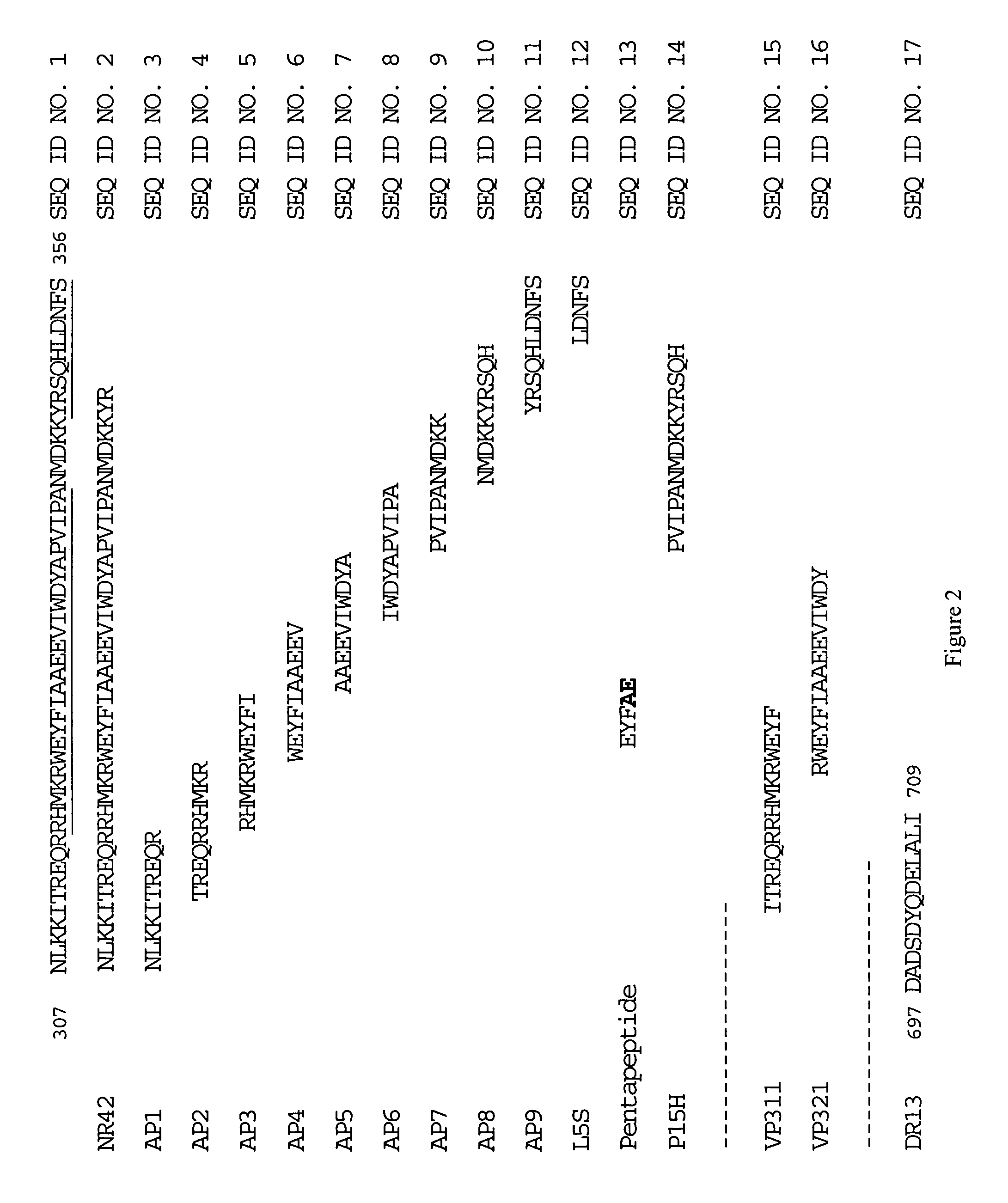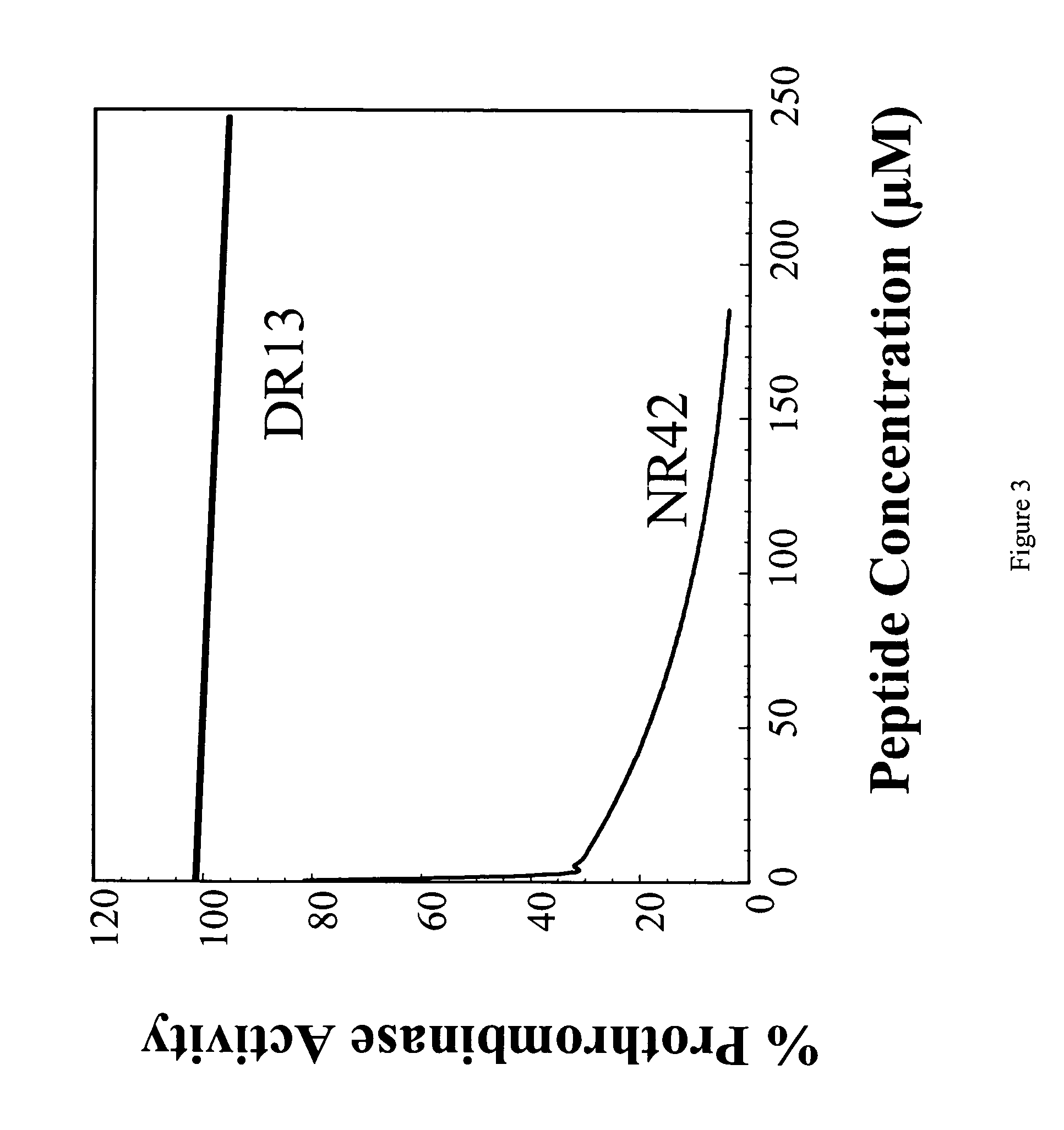Thrombin generation inhibitors
a technology of thrombin and generation inhibitors, which is applied in the direction of immunoglobulins, peptides/protein ingredients, peptides, etc., can solve the problems of occlusion of venous blood vessels, clotting of blood, stroke and peripheral ischemia, etc., and achieve excellent blood anticoagulation properties and little or no adverse side effects
- Summary
- Abstract
- Description
- Claims
- Application Information
AI Technical Summary
Benefits of technology
Problems solved by technology
Method used
Image
Examples
working examples
[0090]The invention may be better understood by reference to the following examples, which serve to illustrate but not to limit the present invention.
example 1
Synthesis of the L5S Peptide (SEO ID NO. 12)
[0091]The peptide L5S (SEQ ID NO. 12), consisting of the amino acid sequence LDNFS (see FIG. 2), was synthesized using the solid-phase method using Fmoc chemistry in an Applied Biosystems (Foster City, Calif.) Model 431A Peptide Synthesizer. The activation was carried out with HBTU / DEA. The Nα-amino group was protected by Fmoc and side-chain functional groups were protected by t-Bu (D and S) and Trt (N). The peptide was cleaved with TFA / thioanisole / water / EDT (90:5:2.5:2.5) for 3.5 hours. About 50 mg of the crude peptide was obtained. HPLC chromatograms were obtained using a gradient of 5 to 60% Buffer B over 45 minutes (Buffer A: 0.1% TFA in water, Buffer B: 0.08% TFA in acetonitrile). The column used was a C18 reverse phase column.
[0092]Fractions from the HPLC column that contained the peptide were collected, lyophilized and stored as a dry powder at −70° C. in a dessicator until it was ready to be used. Fifty mg of crude material yielded...
example 2
Assay of the N42R Peptide for Inhibition of Blood Clotting
[0093]In this study, a 42 amino acid peptide, N42R, encompassing amino acids 307–348 of human factor Va (FIG. 2, SEQ ID NO. 2) was synthesized using the method described in Example 1 and tested for its ability to inhibit prothrobminase activity using an assay whose endpoint was formation of a visual blood clot.
[0094]Each visual blood clotting reaction comprised three components. The first component was a thromboplastin reagent. Thromboplastin reagent refers to a reagent that contains phospholipids and tissue factor (“TF”). TF is a membrane protein that forms a complex with factors VII and VIIa, promotes conversion of factor VII to factor VIIa, which subsequently converts factor X to factor Xa (see FIG. 1). The thromboplastin reagent used was Simplastin Excel which was made by Organon Teknica (West Chester, Pa.) and is made from rabbit brain.
[0095]The second component of the visual clotting assay was plasma (the liquid part of...
PUM
| Property | Measurement | Unit |
|---|---|---|
| molecular weight | aaaaa | aaaaa |
| molecular weight | aaaaa | aaaaa |
| pH | aaaaa | aaaaa |
Abstract
Description
Claims
Application Information
 Login to View More
Login to View More - R&D
- Intellectual Property
- Life Sciences
- Materials
- Tech Scout
- Unparalleled Data Quality
- Higher Quality Content
- 60% Fewer Hallucinations
Browse by: Latest US Patents, China's latest patents, Technical Efficacy Thesaurus, Application Domain, Technology Topic, Popular Technical Reports.
© 2025 PatSnap. All rights reserved.Legal|Privacy policy|Modern Slavery Act Transparency Statement|Sitemap|About US| Contact US: help@patsnap.com



